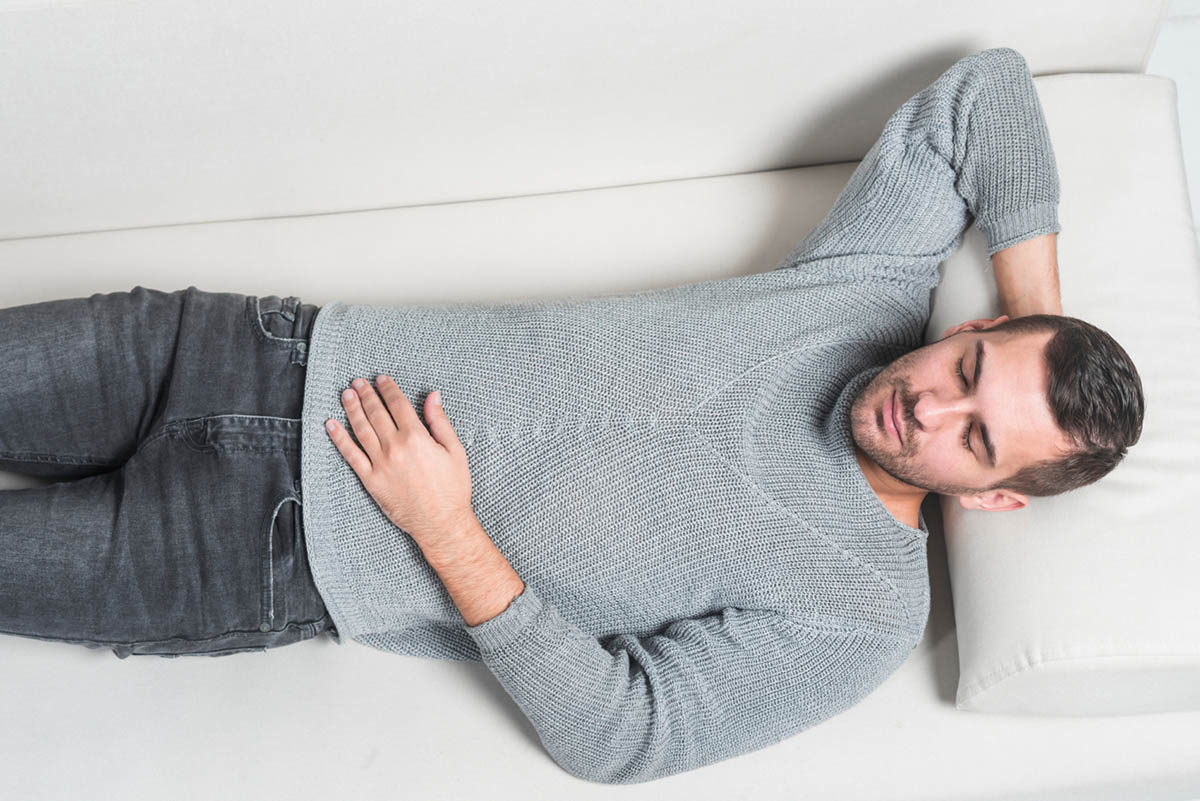Introduction
Quality sleep is vital for overall well-being, and one of the key factors influencing the quality of our sleep is our sleeping position. For those grappling with lower back pain, finding the best sleeping position for lower back pain becomes crucial.
In this guide, we’ll delve into understanding lower back pain, exploring the impact of sleep positions, and discovering the optimal ways to achieve restful sleep while alleviating lower back discomfort.
Understanding Lower Back Pain
Lower back pain is a common problem affecting millions worldwide. The occurrence of lower back pain rises with age, peaking around 50–55 years, and is more common in women. It’s a complex issue that deserves a closer look. This discomfort in the lumbar region, can significantly impede one’s quality of life, making it essential to discern its nuances.
2 Primary Types of Lower Back Pain
Understanding lower back pain involves recognizing its two primary types: acute and chronic. Before delving into the specifics of each, let’s explore their unique characteristics and implications.
Acute Lower Back Pain
Acute lower back pain, marked by a sudden onset and shorter duration, often results from abrupt movements or muscle strains, causing muscle tension. This type serves as a signal, prompting the need for immediate attention and care. Causes can include sudden lifting, twisting, or injury, while risk factors may involve poor posture or inadequate physical conditioning. Understanding the severity of pain is crucial for effective management and timely intervention.
Chronic Lower Back Pain
In contrast, chronic lower back pain persists for an extended period, usually three months or more. Its origins can be diverse, ranging from underlying medical conditions such as arthritis or herniated discs to lifestyle factors like prolonged periods of sitting or standing. Understanding the causes and risk factors for chronic pain is crucial for developing effective management strategies. Now, let’s delve into each type to better understand how they affect us.
The Role of Sleep Position in Lower Back Pain

The way we sleep plays a pivotal role in the health of our lower back. It goes beyond mere comfort; it directly influences our well-being. Understanding how to sleep with lower back pain is not just beneficial but essential for alleviating discomfort and ensuring a truly restful night’s sleep.
Finding the Best Sleeping Position for Lower Back Pain
Whether you’re a side sleeper, back sleeper, or prefer lying on your stomach, understanding the nuances of each position is crucial for optimizing your sleep quality. Achieving a neutral position in your chosen sleep posture, promoting the well-being of your spinal column, can make a substantial difference in your overall comfort and well-being.
Let’s explore these positions and share tips to ensure a pain-free night’s sleep.
Sleeping on Your Side
Side sleeping is often recommended for lower back pain. It helps maintain spinal alignment and reduces pressure on the lower back. To optimize this position, place a pillow between your knees to further support alignment. Two studies showed that side-lying was consistently identified as a protective posture against these spinal symptoms.
Sleeping on Your Back
Back sleeping is one of the best ways to sleep with lower back pain, promoting natural alignment of the spinal column. Enhance this posture by using a pillow under your knees, effectively easing strain and muscle imbalance on the lower back. Experiment with pillow height to discover the most comfortable sleeping position for a night of undisturbed rest.
Sleeping on Your Stomach: Is This the Worst Sleeping Position for Lower Back Pain?
While stomach sleeping is generally discouraged for lower back pain due to its potential for bad posture—the worst position for spinal alignment—placing a pillow under the pelvis can help maintain better spinal alignment. This is particularly important as stomach sleeping often leads to an awkward sleeping position, and the addition of a pillow can significantly improve overall comfort and promote a better night’s rest.
Can the Mattress cause Lower Back Pain
The mattress you sleep on plays a crucial role in supporting your lower back. An unsupportive or worn-out mattress can exacerbate pain. Invest in a mattress that provides adequate support, considering factors like firmness and material.
Investing in the Right Mattress and Pillow
Choosing the right mattress and pillow is a crucial investment in your sleep quality and overall well-being. It’s not just about comfort; it’s about providing the support your body needs to prevent or alleviate lower back pain. This decision is a fundamental aspect of maintaining good sleep hygiene, ensuring a restful and comfortable night’s sleep.
Selecting the Right Mattress
Consider memory foam or latex mattresses. Memory foam molds to your body, providing personalized support, while latex offers a responsive feel for proper spinal alignment. Choose based on your preference: memory foam for a softer feel or latex for a firmer, bouncier option. A mattress with a moderate firmness level enhances pain relief and reduces disability in individuals with chronic non-specific low back pain. Find the balance for comfortable and supportive sleep.
Choosing the Ideal Pillow
Select a pillow that suits your sleeping position. For side sleepers, choose a thicker pillow to maintain proper alignment; back sleepers benefit from a medium-firm option supporting the neck’s natural curve. Stomach sleepers, while encouraged to change positions for lower back health, should opt for a softer, flatter pillow to reduce neck strain and neck pain.
Additional Tips for Improving Sleep Quality

Enhancing your sleep quality goes beyond mattress and sleep position choices. Consider these practical tips in list form:
Maintain a Consistent Sleep Schedule: Go to bed and wake up at the same time every day, even on weekends. This consistency helps regulate your body’s internal clock, promoting better quality of sleep.
Create a Comfortable Sleep Environment: Keep your bedroom cool, dark, and quiet, invest in comfortable bedding and pillows to create a cozy atmosphere.
Limit Screen Time Before Bedtime: Reduce exposure to electronic devices, such as phones or tablets, at least an hour before sleep. The blue light emitted by screens can interfere with melatonin production, affecting sleep quality.
For Persistent Lower Back Pain, Consider Consulting Progressive Mobility
If lower back pain persists despite these practices, seeking professional help from specialists like chiropractors or orthopedic physical therapy experts, such as Progressive Mobility Physio & Performance, may provide valuable insights and tailored solutions. For more information, visit Progressive Mobility Physio & Performance for personalized care.
Conclusion
Finding the best sleeping position for lower back pain is a personalized journey. Experiment with different positions, invest in a quality mattress, and prioritize a sleep-friendly environment. If challenges persist, consulting a physical therapist can offer personalized guidance, especially if experiencing non-specific spinal symptoms. A good night’s sleep is within reach, contributing to improved overall well-being.
FAQs
Q1: How should I sleep to relieve lower back pain?
A1: Experiment with side or back sleeping and use supportive pillows to relieve lower back pain while keeping the spine neutral. This approach not only enhances comfort but also contributes to a better night’s sleep, preventing sleep deprivation. Understanding the relationships between sleep posture and overall well-being is essential for optimal rest
Q2: Is lying in bed good for lower back pain?
A2: Moderate bed rest can be beneficial, but maintaining movement, especially when transitioning to a fetal position, is crucial for preventing stiffness and promoting recovery. This proactive approach aids in reducing musculoskeletal pain and supports overall well-being.
Q3: Can a pillow help lower back pain?
A3: Yes, the right pillow, whether it’s a firm pillow, body pillow, or thinner pillow, can provide support and alleviate lower back pain by promoting proper spinal alignment, especially in the lumbar spine and cervical spine. If issues persist, consulting a spine specialist for personalized guidance is recommended.


